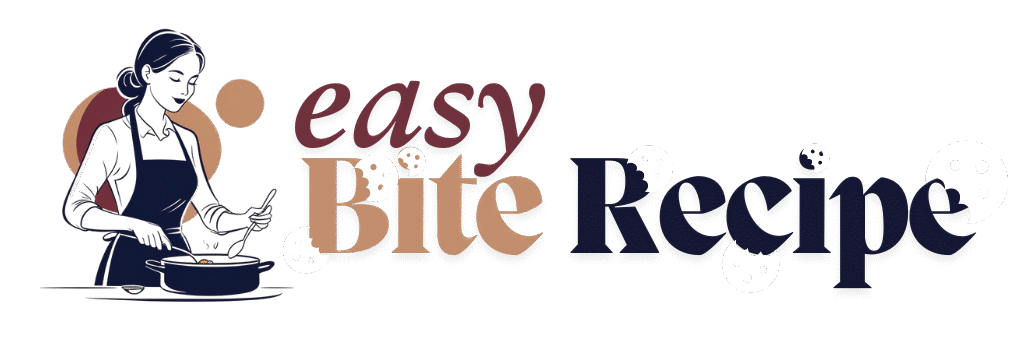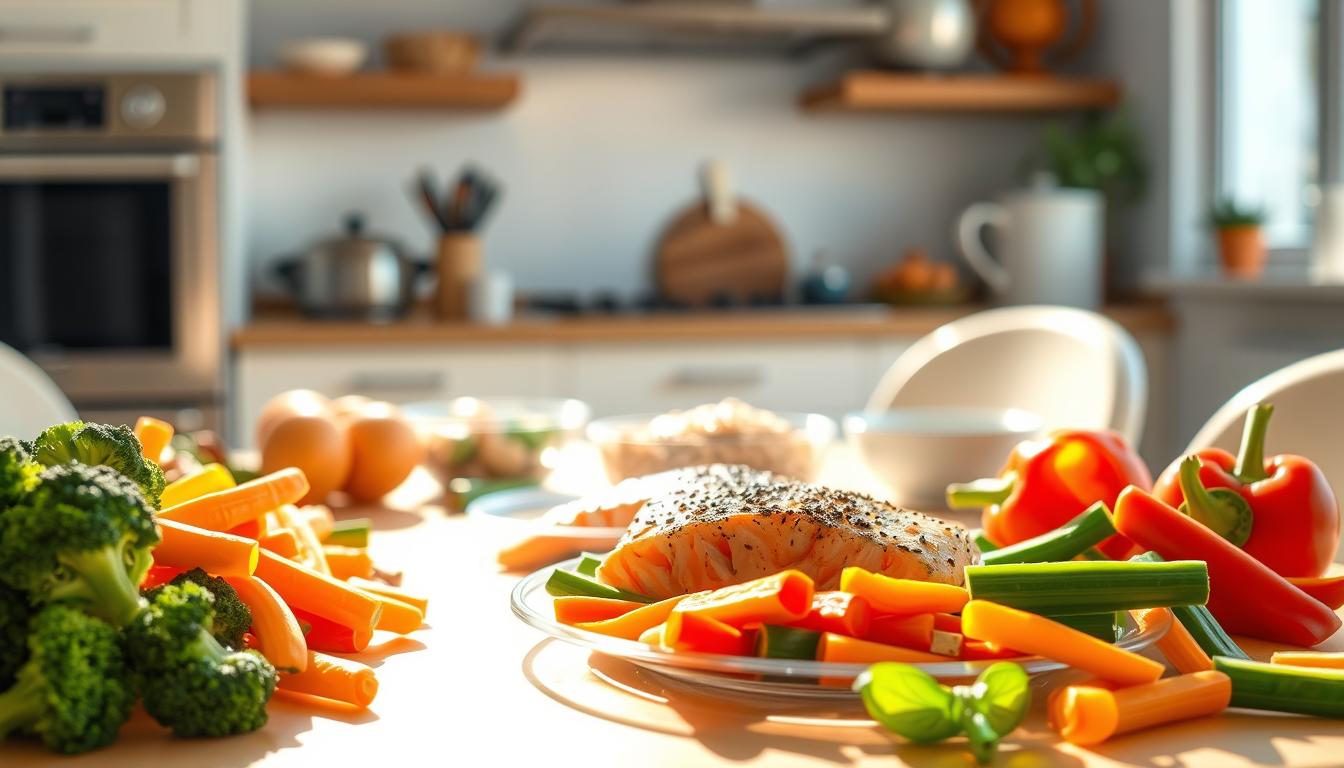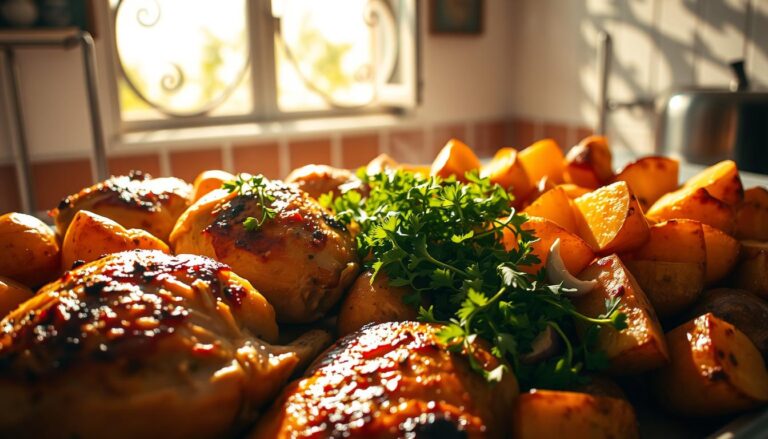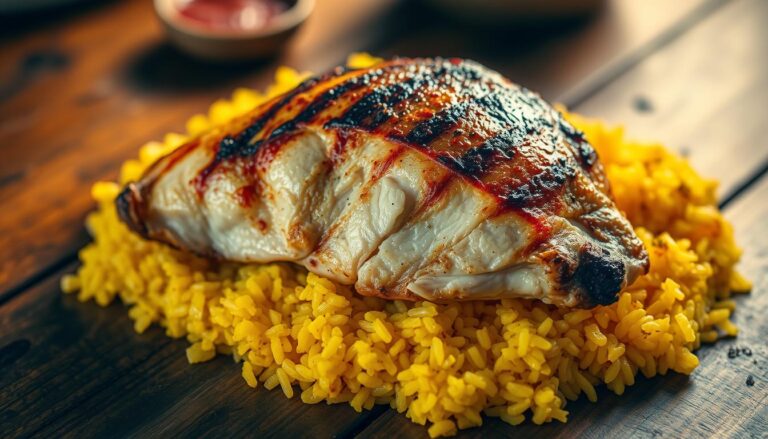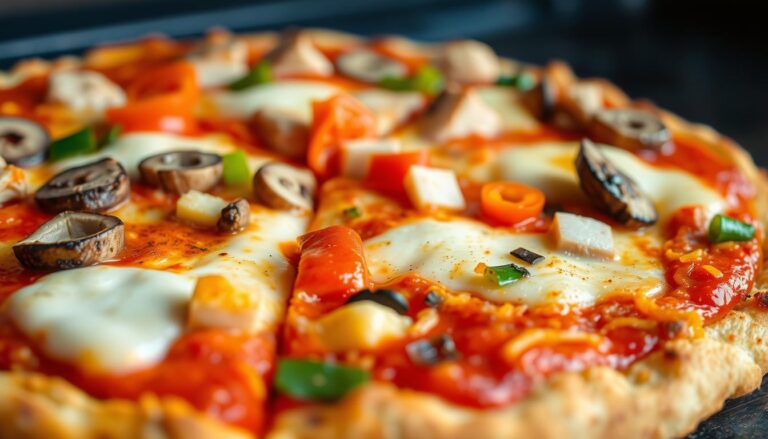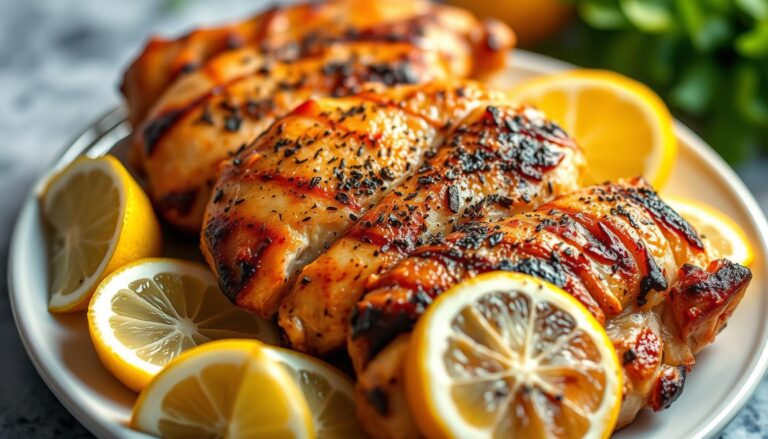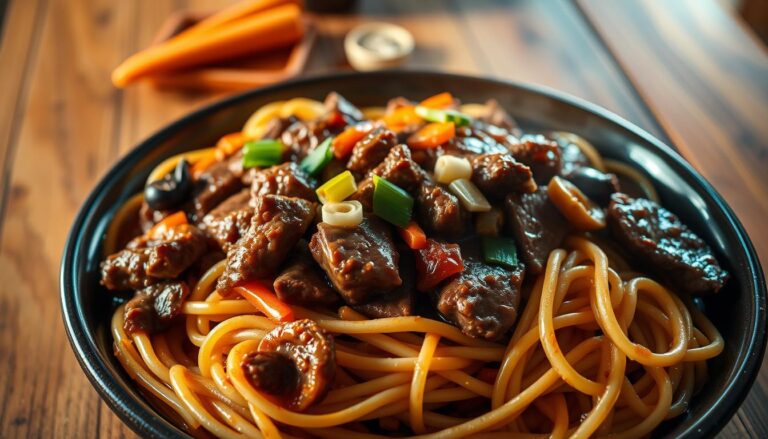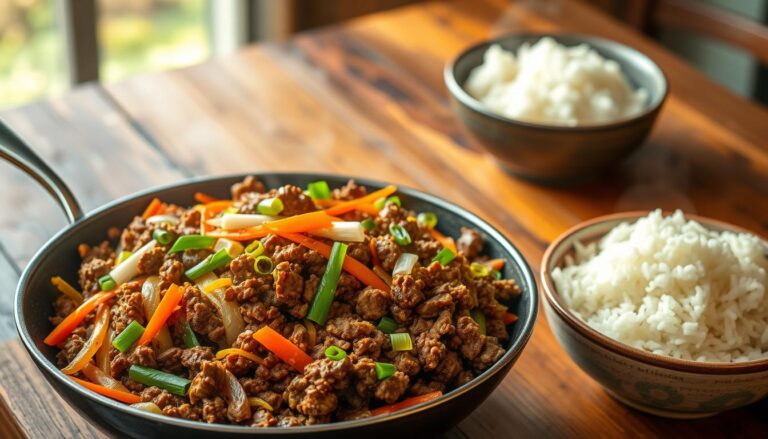Dinner Ideas for Toddlers: Nutritious Options for Every Night
Table of Contents
As a parent, finding healthy meal options for your toddler is a big task. It’s important to start them on good eating habits early. This helps them grow well.
You want your child to get the nutrients they need. With some planning, you can make delicious and nutritious meals. Your toddler will love them.
Key Takeaways
- Nutritious meals are essential for toddlers’ growth and development.
- Establishing good eating habits early on can have long-term benefits.
- Simple meal planning can help you provide healthy options.
- Balancing nutrients is key for your toddler’s energy and growth.
- Healthy eating habits can be developed with patience and consistency.
Understanding Toddler Nutritional Needs
Toddlers need a special diet for their health and growth. They require a balanced diet to support their fast growth and lots of energy.
Nutrition is very important for toddlers. It helps with their physical growth, brain development, and keeps them healthy. Giving them the right nutrients is key for their well-being.
Essential Nutrients for Growing Bodies
Toddlers need proteins, healthy fats, carbs, vitamins, and minerals. Proteins help with growth and repair. Healthy fats are good for the brain. Carbs give energy, and vitamins and minerals help the body work right.
Eating fruits, veggies, whole grains, lean proteins, and healthy fats is good. Iron is important for blood, and calcium helps bones grow strong.
Appropriate Portion Sizes by Age
Knowing the right portion sizes is important. Toddlers need smaller portions than adults. For example, a protein serving is 1-2 ounces, and veggies are 1/4 to 1/2 cup.
Let your toddler’s hunger guide how much they eat. This can change every day. Teaching them to eat well and watching portion sizes helps avoid too much food and keeps their diet balanced.
Creating Balanced Toddler Meals
Understanding your toddler’s nutritional needs is key to providing balanced meals. A balanced diet is vital for their growth, energy, and health. By mixing different foods and following simple tips, you can make sure they get the nutrients they need.
The Toddler Plate Method
The Toddler Plate Method makes it easy to ensure a balanced meal. Picture your child’s plate divided into sections. Half for fruits and veggies, a quarter for protein, and a quarter for grains. This method helps you create a balanced meal without measuring.
Incorporating All Food Groups
It’s important to include all food groups in your toddler’s meals. This means a variety of fruits, veggies, whole grains, lean proteins, and healthy fats. A diverse diet not only offers a wide range of nutrients but also helps your child develop good eating habits. For instance, mixing different colored veggies can make meals fun and appealing.
| Food Group | Examples | Benefits |
|---|---|---|
| Fruits | Apples, Bananas, Berries | Rich in vitamins, fiber |
| Vegetables | Carrots, Broccoli, Spinach | Rich in vitamins, minerals, antioxidants |
| Protein | Chicken, Fish, Eggs, Beans | Essential for growth and repair |
| Grains | Rice, Quinoa, Whole Wheat Bread | Provides energy, fiber |
Healthy Fats and Proteins for Development
Healthy fats and proteins are vital for your toddler’s growth. Foods like salmon, rich in omega-3 fatty acids, support brain development. Avocados provide healthy fats. Proteins from lean meats, eggs, and legumes are key for muscle and growth. Adding these foods to your toddler’s diet can greatly benefit their health and development.
Quick and Easy Dinner Ideas for Toddlers
Toddlers need special nutrition, and it doesn’t have to take long. Busy parents can find simple, healthy meals that toddlers love. Here are some quick and nutritious meal ideas.
15-Minute Nutritious Meals
It’s possible to make a meal in 15 minutes or less with the right recipes. Quick dinner ideas for toddlers include scrambled eggs with veggies, whole wheat pasta with marinara sauce and hidden veggies, or chicken and veggie stir-fry with rice. These meals are fast and full of nutrients.
For a quick and nutritious meal, consider:
- Scrambled eggs with spinach and whole wheat toast
- Mini whole wheat pizzas with various toppings
- Chicken quesadillas with beans and vegetables
One-Pot Wonders for Busy Parents
One-pot meals are a big help for busy parents. They save on cleanup and are nutritious. One-pot pasta with veggies and lean protein is a good choice. Another option is a hearty soup with veggies, beans, and lean meat, served with whole grain bread.
| Meal | Ingredients | Prep Time |
|---|---|---|
| One-Pot Pasta | Pasta, marinara sauce, vegetables, lean protein | 20 minutes |
| Hearty Vegetable Soup | Vegetables, beans, lean meat, broth | 30 minutes |
Make-Ahead Options That Toddlers Love
Make-ahead meals are great for busy parents. Meals like casseroles or muffin tin frittatas can be made ahead and reheated. Toddlers like foods cut into small pieces or fun shapes.
Some make-ahead ideas include:
- Muffin tin frittatas
- Casseroles with hidden vegetables
- Mini meatballs or burgers
Age-Appropriate Dinner Options
Toddlers need different foods at different ages. As they grow, their diet must change too. It’s key to plan meals that fit their needs.
Meals for 1-Year-Olds
At one year, kids start eating solid foods. They need foods that are easy to chew and swallow. Good dinner ideas include:
- Pureed vegetable soups
- Mashed chicken or turkey with soft veggies
- Soft pasta with mild sauces
It’s also important to watch how much they eat and avoid foods that could choke them.
Dinner Ideas for 2-Year-Olds
Two-year-olds like to do things on their own. They need a variety of foods for good nutrition. Some good dinner ideas are:
- Mini sandwiches or wraps
- Chicken or veg skewers
- Simple pasta dishes with hidden veggies
Letting them feed themselves is also important for their growth.
Feeding 3-Year-Olds and Beyond
By three, kids can eat a wide range of foods. They can help with meal planning and eating. They benefit from:
- More complex meals like stir-fries or casseroles
- Helping with meal planning and prep
- Trying new flavors and textures
| Age | Dinner Ideas | Key Nutrients |
|---|---|---|
| 1 Year | Pureed soups, mashed chicken | Protein, Vitamins |
| 2 Years | Mini sandwiches, veg skewers | Carbohydrates, Fiber |
| 3 Years & Beyond | Stir-fries, casseroles | Varied nutrients, Healthy Fats |
Incorporating Vegetables in Toddler Meals
Making vegetables fun is key to healthy eating in toddlers. As a parent, you shape your child’s eating habits. You can make meals fun and nutritious by adding veggies in creative ways.
Creative Ways to Serve Vegetables
Presenting veggies in fun ways can encourage toddlers to eat them. Try making veggie faces on their plate with carrots, cucumbers, or bell peppers. Serving veggies with dips like hummus or ranch dressing is also a hit.
Veggie-Packed Sauces and Dips
Sauces and dips are great for adding veggies to your toddler’s diet. Blend cooked veggies like spinach or carrots into pasta sauces. Or, make a dip with steamed broccoli and cheese. These dips can go with pasta, crackers, and more.
Colorful Vegetable Combinations That Appeal to Toddlers
Toddlers love bright colors, so mix colorful veggies. Try green beans, red bell peppers, and yellow squash for a fun side dish. Add cheese or sour cream for extra appeal.
Using these ideas in your meal planning ensures your toddler eats a variety of veggies. This sets them up for a lifetime of healthy eating.
Meal Ideas for Picky Toddler Eaters
Feeding a picky toddler can be tough, but there are ways to make mealtime better. It’s all about patience, creativity, and knowing what they need. As a parent, it’s key to offer healthy and tasty meals.

Deconstructed Meals for Independence
Serving meals in parts can help. It lets toddlers make their own food, which makes them feel independent. Instead of a mix of veggies and meat, put them on the plate separately. This lets your child choose what they like.
Dr. Laura Jana, a pediatrician and child feeding expert, says, “Giving kids control over their food makes meals better and less stressful.” Letting them mix foods in their own way helps them try new things without fear.
Food Presentation Strategies
How food looks can really matter to toddlers. Creative ways to present food can make meals fun. Try making food into shapes or creating a “face” on the plate. This makes the meal more exciting.
“The way we present food to children can either encourage or discourage them from trying new things.”
Gradually Introducing New Foods
Introducing new foods slowly is important. Start with a small amount of the new food with something your child likes. For example, try steamed broccoli with a favorite dip or with pasta. Ellyn Satter, a renowned dietitian, says, “Be patient and don’t force it. It might take a few tries for them to like it.”
By using these tips and staying consistent, you can help your picky toddler eat better and try new things.
Family-Friendly Meals That Work for Everyone
It can be tough to make meals for the whole family. But, with smart strategies, it’s doable. You can make dinner time easier by following a few key tips. These ensure everyone, kids and adults, enjoys the meal.
Adaptable Recipes for Different Age Groups
Adaptable recipes are a great way to manage mealtime. They can be changed to fit what each family member likes. For example, a simple pasta dish can have different sauces or toppings. Here are some tips for adaptable recipes:
- Start with a base everyone likes, like pasta, rice, or chicken.
- Provide various toppings or sauces for different tastes.
- Let your kids help cook to learn what they like.
Batch Cooking for Efficiency
Batch cooking saves time and effort during the week. It lets you have healthy, home-cooked meals ready for everyone. Some benefits of batch cooking include:
- Less kitchen time on busy weekdays.
- Less food waste, as you plan meals better.
- Freezing meals for later makes mealtime easier.
Making One Meal Work for the Whole Family
To make one meal for everyone, get creative with recipes. Understand what each family member needs. For example, make a main dish with sides that can be adjusted. Here are some ideas:
- Grilled chicken or fish with various sides, like roasted veggies or mashed potatoes.
- Tacos with different fillings, so everyone can make their own.
- Stir-fries with many ingredients for different tastes.
By using these strategies, you can make mealtime more enjoyable and less stressful for your family.
Meal Planning and Prep for Toddler Dinners
As a parent, you can make mealtime easier with a few simple strategies. Planning your toddler’s dinners ahead of time reduces stress. It also makes sure they get the nutrients they need. Organizing meals can make dinner time more fun and less chaotic for your family.
Weekly Meal Planning Strategies
Begin by planning meals around your toddler’s favorite dishes. Slowly introduce new foods. Think about your family’s schedule for the week and plan meals that fit. Use a meal planning app or a simple calendar to keep track of dinners. Involve your toddler in meal planning to make them feel more involved in dinner time.
Freezer-Friendly Toddler Meals
Preparing meals that can be frozen is a smart way to save time. Make big batches of foods like chicken nuggets, mini meatballs, or vegetable muffins

Time-Saving Preparation Tips
To save time, chop veggies in advance and store them in airtight containers. Cooking proteins like chicken or beans in bulk is also helpful.
“The key to successful meal prep is to keep it simple and flexible.”
Having a well-stocked fridge and freezer means you can quickly make a healthy meal for your toddler.
Conclusion: Nurturing Healthy Eating Habits
Helping your toddler develop healthy eating habits is key. It sets the stage for a lifelong good relationship with food. By knowing their nutritional needs and adding a variety of whole foods, you can guide them to eat well.
There are many ways to make mealtime fun for your toddler. You can create balanced meals and add veggies and healthy fats. Being consistent and patient is important. This way, your child will learn to enjoy a wide range of nutritious foods.
By focusing on healthy eating, you’re helping your toddler stay well for life. Mealtime can become a positive and fun experience for everyone in your family.
FAQ
What are some healthy lunch ideas for toddlers?
Healthy lunches for toddlers can include cut fruits and veggies, cheese cubes, and whole wheat crackers. Mini sandwiches, hard-boiled eggs, and yogurt are also great options.
How can I make meals for my 1-year-old toddler?
At 1 year old, toddlers start eating solid foods. Start with mashed foods like bananas, avocados, and cooked veggies. As they grow, introduce more textured foods.
What are some good toddler meal ideas for picky eaters?
For picky eaters, try deconstructed meals. Serve different parts of a dish separately. Creative food presentation, like fruit faces, can also make meals fun.
How do I incorporate vegetables into my toddler’s meals?
Add finely chopped veggies to dishes like pasta sauces or meatballs. Veggie-packed sauces and dips, like hummus, are also great with crackers or veggies.
What are some quick and easy dinner ideas for toddlers?
Quick dinners include one-pot wonders like pasta or stir-fries. Prep meals ahead and reheat them. Simple meals like grilled cheese or scrambled eggs are also good.
How can I make meal planning and prep easier for toddler dinners?
Use a weekly meal plan and make a grocery list. Prep meals in advance and freeze them. This saves time during the week.
